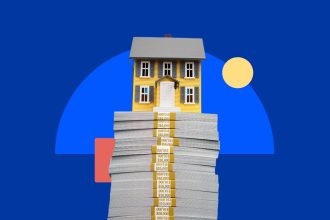Amid an environment of tight inventory and stubbornly high mortgage rates, housing prices in the U.S. continue to rise ever higher. S&P CoreLogic’s latest Case-Shiller U.S. National Home Price NSA Index, released August 27, 2024, reports that annual home-price growth increased in June 2024 by 5.4 percent. That marks the fourth consecutive month of hitting a new all-time high.
Case-Shiller Index shows home prices still rising
In addition to the 5.4 percent overall increase, June numbers increased annually for both of Case-Shiller’s composite indices as well, with the 10-city index up 7.4 percent and the 20-city index up 6.5 percent.
“The S&P CoreLogic Case-Shiller Indices continue to show above-trend real price performance when accounting for inflation,” said Brian D. Luke, head of commodities, real & digital assets at S&P Dow Jones Indices, in a statement. “While both housing and inflation have slowed, the gap between the two is larger than historical norms. Another popular theme is making housing more affordable to first-time homebuyers: We compared each of the 16 markets that the S&P CoreLogic Case-Shiller Home Price Indices calculate on a tiered basis to evaluate historical performance of more affordable homes. Looking at the last five years, 75 percent of the markets covered show low-price tiers rising faster than the overall market.”
Regional fluctuation continues
East Coast and West Coast continue to battle it out for the top spot in price growth. New York City tops the annual-growth pack again in June, after ending a several-month run by San Diego in May. The Big Apple reported an annual gain of 9.0 percent, closely trailed by San Diego. The cities with biggest increases were:
- New York City (9.0 percent)
- San Diego (8.7 percent)
- Las Vegas (8.5 percent)
- Los Angeles (8.2 percent)
- Chicago (7.0 percent)
- Detroit (7.0 percent)
The city that saw the slowest rates of growth was once again Portland, at 0.8 percent.
The Fed and the housing market
The Federal Reserve’s aggressive moves to combat inflation — with 10 consecutive rate hikes over 2022 and 2023 — put upward pressure on mortgage rates, even as inflation declined. While the Fed doesn’t directly set mortgage rates, the mortgage market’s interpretations of the central bank’s moves influence how much you pay for your home loan.
The long period of low mortgage rates following the Great Recession came to an end in 2022. In June 2022, rates topped 6 percent for the first time since 2008. The upward trend continued through October, when rates hit a 23-year high of 8 percent. Steve Reich, divisional vice president at CrossCountry Mortgage in Pennsylvania, highlights the impacts that these trends have on the housing market: “As the Fed worked to get inflation under control, higher interest rates tempered what many homebuyers could afford and, in turn, softened home sales,” he said in a statement.
Higher rates also exacerbate the housing shortage, stopping many homeowners from selling when they otherwise might — and thus keeping those homes off the market and out of the supply of available housing.
The remarkable rise in mortgage rates is acting as a kind of golden handcuffs.
— Mark Hamrick, Bankrate Senior Economic Analyst
“The remarkable rise in mortgage rates is acting as a kind of golden handcuffs,” says Mark Hamrick, Bankrate’s senior economic analyst. Higher rates are “limiting the desire and some of the ability of people to move out of the homes they currently own. That further pressures housing inventory, adding insult to supply injury.”
While hope may be on the horizon, with anticipation of a Fed rate cut in September, mortgage rates remain fairly elevated: As of August 21, 2024, Bankrate’s weekly lender survey puts the average 30-year mortgage rate at 6.62 percent.
What the Case-Shiller Index means for homebuyers and sellers
The current market has proved challenging on both sides of the real estate transaction — and unless we see a significant drop in either home prices or mortgage rates, both buyers and sellers will need to go with the flow. “For prospective sellers, the new status quo dictates they remain flexible on price, given the extraordinary challenges posed by the sharp increase in mortgage rates,” Hamrick says.
“Those who are very motivated to purchase a home should be prepared for the sticker shock associated with the increased expense of financing the purchase,” he continues. “Part of the flexibility that may be required includes seeking a possible downgrade of footprint or quality of home, along with the neighborhood, in order to achieve an affordable purchase.”
Robert Frick, corporate economist with Navy Federal Credit Union, agrees that the news is disheartening for hopeful buyers. “That home prices continue to increase above the rate of inflation isn’t surprising, but the report showed an even more discouraging trend: Prices for starter homes are rising faster than the overall market,” he said in a statement. “This means reaching the first rung of the homeownership ladder is becoming even tougher for millions of potential homeowners.”
However, Reich emphasizes that buying a home in today’s market, while difficult, is still possible. “The average time active listings stay on the market is getting longer, resulting in a slightly less competitive market,” he says. National Association of Realtors data proves that out: The median days-on-market length was 24 days in July, up from 20 days in June of last year, which gives buyers a bit more time to make an informed, well-considered decision. “And that’s good news for homebuyers who are still in the game.”
Read the full article here














